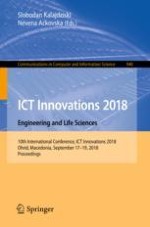2018 | OriginalPaper | Chapter
Foresight as a Tool for Increasing Creativity in the Age of Technology-Enhanced Learning
Author : Derek Woodgate
Published in: ICT Innovations 2018. Engineering and Life Sciences
Publisher: Springer International Publishing
Activate our intelligent search to find suitable subject content or patents.
Select sections of text to find matching patents with Artificial Intelligence. powered by
Select sections of text to find additional relevant content using AI-assisted search. powered by
